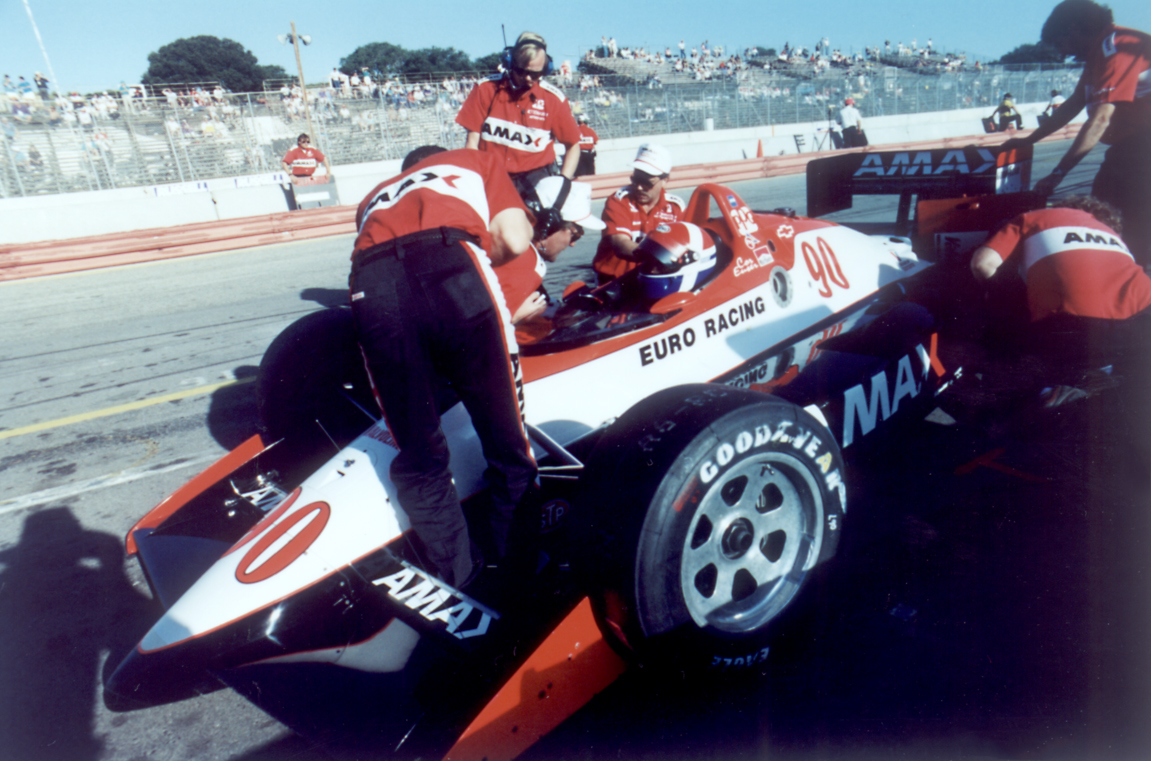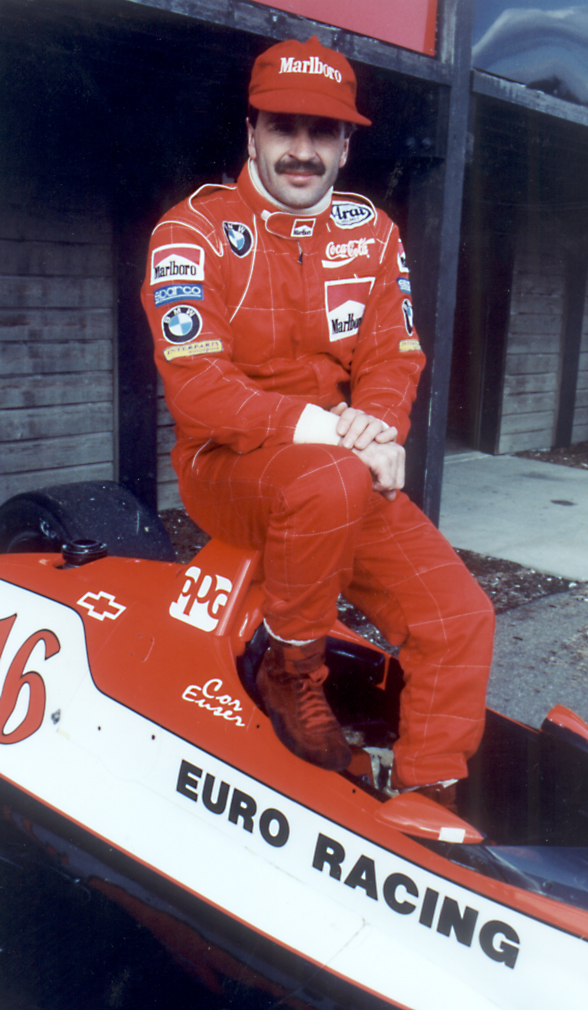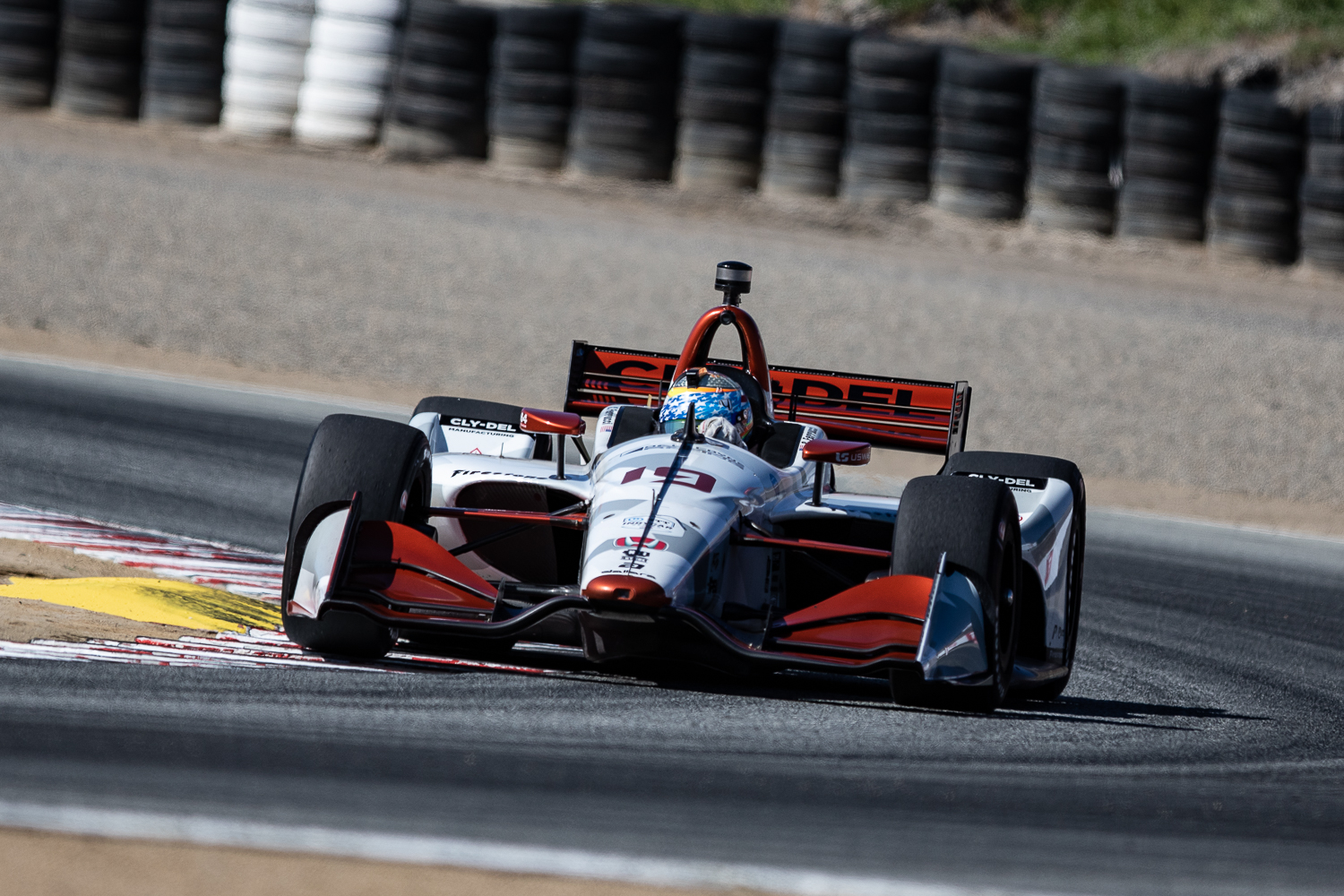
Once upon a time...
Photo Credit: Mariann Nagy
The Gist
This is the story of Cor Euser. A story of what could have been.
Probably known to very few when it comes to American Motorsports history but there's no doubt that Euser was and still is a Dutch icon.
Once upon a time: Cor Euser, one-time IndyCar driver
For those who ever saw a nature documentary by David Attenborough, the following is not news: in order to stay healthy, sharks have to keep swimming and moving at all times. It seems like a fitting metaphor for the career of Cor Euser, one of the most prominent names in Dutch motorsports. His resume can be summarized very easily: as long as it has four wheels, Cor drives it as fast as possible. He has been doing so for almost forty years now and the 62-year-old veteran is in no mood of calling it quits any time soon. “I still enjoy driving, I coach a few younger guys. I am definitely not quitting yet,” he tells me over the phone, from his racing shop just outside his Dutch hometown of Oss.
This is the story of Cor Euser.
Anyone who has been around for long, has seen episodes and moments where a career could have taken a completely different turn. Take the year 1991, for example, which was a special year for Euser. Not just because he drove his only season in the German touring car series DTM with BMW that year, or because he was one of the better drivers in a talent-packed 1991 World Championship for Group C Sports cars. Above all, it was a special year because in the fall of 1991, he was close to a real breakthrough in open-wheel racing... not once, but twice.

Photo credit: Autosport.nl
Let's go back in time to August 1991.
After a number of years in Formula 3000 and a period in which Cor Euser wins every Formula Ford title possible (actually beat Ayrton Senna at Zolder in 1982) the moment has finally come: Euser will make his debut in Formula 1, with the brand new team ran by Eddie Jordan, at Spa. Regular driver Bertrand Gachot is stuck in a London jail after an altercation with a taxi driver and can’t compete at his home Grand Prix – in his search for a replacement, Jordan has zeroed in on Euser.
“At that time, you could drive Formula 1 if you brought along 75,000 pounds (around 100k USD),” Euser explains. "In 2019 that amount is mere pocket change, but at the time it was a sizable sum."
Everything seems to be settled, until someone at Mercedes-Benz picks up the phone and dangles a much bigger bag of money in front of Jordan’s eyes. The German company offers to pay the nearly double of what Euser has managed to scrape together, which convinces Eddie Jordan to put a young German driver from Mercedes’ Group C program in his car. Euser, in his own Group C machine, has been driving against this German talent that whole year, so he knows the young gentleman well. The result: at the end of August it is not Cor Euser, but Michael Schumacher who takes the wheel of the Jordan 191 in Belgium.
The rest, as they say, is history.
Obviously Euser is disappointed, but he decides to make the best of the situation and agrees to a buyout by Jordan, while keeping his sponsor funds in his pocket.
“Because the Jordan deal was now off, we had plenty of money left to do other fun things,” explains Euser. “My manager at the time was a guy called Hans Grimmelt, who also worked with other Dutch drivers like Huub Rothengatter and Jan Lammers. And shortly after the Jordan deal fell through, he came up with the name of Tony Bettenhausen.”
Euser is keen on this new opportunity: F1 may be out of reach now, but a chance at driving IndyCars is pretty much the next best thing.
After all, Tony Bettenhausen is a scion of one of the racing families who have pretty much dominated racing in post-war America. Just like with the Andretti’s, the Unser’s and the Foyt’s, the racing virus is carried over from father to son within the Bettenhausen family. ‘Tony B’ is also very familiar with the concept of chasing sponsor money wherever he can find it: during 1988, he spent a whole season driving around with a car covered in decals of the much-lampooned Yugoslav car brand Yugo, for lack of something better.
His dream is to do what his father never could: win the Indianapolis 500.
Fast forward to 1991, and Bettenhausen has his own IndyCar team, a number of 1990 Penske PC19 chassis and a couple of Chevrolet engines at his disposal. Yet he still struggles to properly challenge the top teams. The reason is that Tony B knows deep inside that his own strength is primarily on oval tracks.
“Bettenhausen was definitely not an A-team, they were more of a B-team,” says Euser. “At the same time, the people inside the team were very nice and welcoming.” In his search for A-status, and a specialist for the road courses on the calendar, Bettenhausen found Euser. He decides to field an extra entry for Euser at the season finale at Laguna Seca, in order to judge the Dutchman’s qualities.
Cor Euser
“And shortly after the Jordan deal fell through, he came up with the name of Tony Bettenhausen.”
These days, IndyCar is a distant and niche interest for many Europeans. But in the late 1980s and early 1990s, open wheel racing in the United States was enjoying its golden years. This is the era in which Ayrton Senna showed serious interest in moving to America by testing a Penske IndyCar with his friend Emerson Fittipaldi.
Newman Haas was looking for a driver to replace the injured Mario Andretti for one race, and decides to reach out to Alain Prost – because why not? And this is the period in which reigning Formula 1 world champion Nigel Mansell hands in his contract with Williams F1 and heads for the States, in search of more enjoyment and a new challenge. IndyCar is the only racing competition that worried Formula 1 chief Bernie Ecclestone at the time.
Because while Formula 1 struggled with the dominance of first McLaren and then Williams, the IndyCars are a textbook example of close racing and cut-throat competition. Every race has at least a dozen credible challengers for the win. The field consists of American racing legends such as Al Unser Sr, A.J. Foyt, Rick Mears, Bobby Rahal and Danny Sullivan; former Formula 1 world champions Fittipaldi and Mario Andretti; young national heroes in-the-making such as Michael Andretti and Al Unser Jr – and of course foreign winners like that other Dutchman, 1990 Indinapolis 500 winner Arie Luyendyk. Millions of people around the world follow the races, while the drivers aim to win million-dollar purses. These were household names.
In other words, it is not so strange that Euser is very keen to cross the Atlantic. But before he can take part in an IndyCar race, he has to pass a regulatory rookie test. That test takes place in the week ahead of the race at Laguna Seca, during a rainy session at the Mid-Ohio road course. In line with those same regulations, Euser is assigned an experienced driver as his de facto examiner during the rookie test. In his case, he is being judged by 1985 Indy 500 winner and 1988 IndyCar champion Danny Sullivan.

Photo credit: Autosport.nl
Above: Cor Euser at Laguna Seca in 1991
The Dutchman immediately leaves an impression with his tutor, who has brought along his Alfa Romeo-powered Lola for the occasion.
“It was a bit slippery and Sullivan was supposed to be my coach. So I went out into the rain and the next thing he knew, I turned quicker laps than he did in his Alfa. The test was planned and paid for two days, but we had cleared the whole rookie program within a day,” Euser says. Sullivan was convinced of his qualities and gives Euser full marks in his official report. ‘I still have the certificate here,” laughs Euser. “Sullivan wrote: ‘Cor will find his way in IndyCar pretty easy’.”
And so Cor Euser arrives at the Monterey peninsula in California in October 1991. He is a virtual unknown in the paddock, and it shows. Most American newspapers present him in the context of his more illustrious countryman Luyendyk, and some even claim that Euser has learned everything he knows from Luyendyk – which is at best half-true, even though they have some shared history. But the reporters on site quickly learn that Euser is deserving of a reputation all his own: despite the fact that he is basically driving the team’s back-up car, he immediately slots in near the top of the charts in the first practice session and is much faster than team owner Tony Bettenhausen.
Bettenhausen has seen enough and immediately changes course. Euser’s car is not just the back-up chassis, he is also driving around with the team’s back-up powerplant, the so-called B-engine. “After that first practice, Tony came up to me and said: you should take my A-engine. I want to see what you can do with it,” says Euser. That confidence is repaid during qualifying: Euser is thirteenth after the first official session and improves another spot during second qualifying. He will start the race on Sunday from an outstanding twelfth place: he is the best rookie, while Tony Bettenhausen is stuck in 25th.
Paul Tracy was making his 3rd start at Laguna Seca in 1991 while Dutchman, Cor Euser, was making his first...
Euser stays in twelfth when the race gets going the next day. Up front, the focus is on the championship battle between Michael Andretti and Bobby Rahal, but that is not at all on Euser’s mind. He just wants to put in a good performance and finish the race. Nevertheless, his performances are noticed in the ESPN commentator booth. Paul Page describes Euser’s IndyCar adventure as “a remarkable story” and concludes that the Dutchman “really does a magnificent job”. His colleague and colour commentator, former F1 and IndyCar driver Derek Daly agrees: “Euser is doing an incredible job, he has been on the pace all weekend.”
Obviously, at that moment, Euser is unaware of all the praise coming his way. The same goes for some other noticeable moments during the race. Halfway through the race, as he is being lapped by the leaders, he has a front-row seat for the collision between Penske team mates Rick Mears and Emerson Fittipaldi. In the TV broadcast it is a spectacular moment, but even though it happened right in front of him, Euser finds himself hard pressed to remember it. “I was driving my own race and was simply focused on doing the best job I could,” he says, 28 years later. “Who was in front of me or behind me, that wasn’t on my mind at all.”
To be fair, his car is a bit of a handful. The 1990 Penske is equipped with aging technology, such as a gearbox with five instead of six gears. Moreover, the car hasn’t really been prepared for him: especially his seating position is far from ideal, leaving Euser struggling to properly operate the pedals. “I almost couldn’t reach the braking pedal,” he recalls. “I could just hit the brakes with my big toe, so to speak, and after a while my legs started tingling. Eventually, I slightly loosened my seatbelts so that I could sink down into the cockpit a bit more.”
Nor are the pitstops an undivided success. Given the fact that Bettenhausen Racing normally operates only one car, it gathered a temporary crew-for-hire for Euser’s second car which is far from a well-oiled machine. After doing one stop, Euser suddenly struggles enormously with the handling of his car. It turns out that instead of carefully monitoring the tire pressure of his new set of Goodyears, the crew has left the tires lying in the hot Californian sun too long ahead of the stop, which ruins the balance of the car.
“That whole stint, I was constantly fighting the car and just trying to keep it on the track. So the race was far from easy, but in the end I finished in tenth, just behind Arie Luyendyk, who had a lot more experience.”
That tenth spot lands Euser three points for the championship, as well as over 15,000 dollars in prize money. Above all, he has left an outstanding impression in the IndyCar paddock, and he receives a number of honorable mentions in the American papers on Monday morning. Remarkably enough, the Dutch daily press largely ignores Euser’s IndyCar adventure – the only mention of his Laguna Seca drive appears in December 1991, two months after the fact, at the bottom of an article that focuses on Luyendyk.
Cor Euser
“After that first practice, Tony came up to me and said: you should take my A-engine. I want to see what you can do with it”
But despite that limited media attention, Euser hoped for more. And indeed, Bettenhausen and his new sponsor Alumax are very enthusiastic about the Dutchman, and quickly prepared a contract for 1992. The problem is: Euser never finds out about it. To this day, he blames former manager Hans Grimmelt. “The thing is this: I was in contact with Hans, not directly with Tony Bettenhausen,” explains Euser. “But Hans did nothing, and he never kept up the contacts with Bettenhausen. I called him a few times that winter to check in: what’s up, any news? He told me he was working on sponsors for America, but nothing happened.”
Instead, Euser claims, Grimmelt pocketed the prize money that Euser earned from the Laguna Seca race. “The extra money that we had left because of that shorter-than-planned rookie test at Mid-Ohio, I never saw that either. I actually sued him later on, and won the case. But then he put his company into bankruptcy and I still ended up empty-handed.” Euser is convinced that he did not only miss out on thousands of dollars, but also on an IndyCar career. “I would have loved to drive IndyCar, I would have skipped everything else for that.”
Due to the radio silence from Holland, Tony Bettenhausen eventually decides to sign Swedish driver Stefan Johansson as his road course driver for 1992. Johansson, of all people, is the one who eventually informs Euser of what happened.

Photo credit: Autosport.nl
“We drove together in Group C Sports cars at the time, and he told me at some point: did you know that Tony Bettenhausen was super keen to sign you? Why did you never respond to their contract offer?” When considering that Euser mostly beat his Swedish colleague in their Group C days, his frustration is more than understandable.
Nevertheless, frustration is not the dominating feeling as we wrap up our conversation and reflect on his career. Next spring he will celebrate forty years as a professional race car driver, and his resume is impressive.
“It has never made me rich, but I still get a decent pay cheque out of it and I do what I love the most. The other day, an old cousin of mine came by the shop and he said: I remember when we were little, you were constantly jealous over my collection of Dinkytoys, because I had some that you didn’t. Now when we stand in your race shop, it is my turn to be jealous!”

Santino Ferrucci may be the one holding the off season cards at the moment... where will he end up for 2020?
Like this type of content? Want more?
Submit your email address below so we can email it to you.